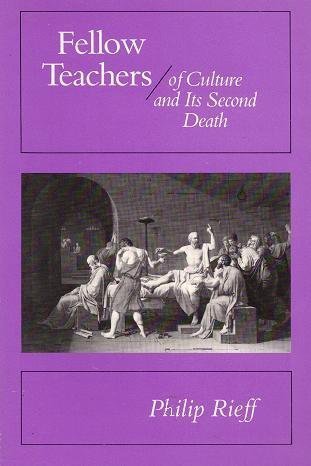

 |

|

The average rating for Fellow teachers/of culture and its second death based on 2 reviews is 3.5 stars.
Review # 1 was written on 2015-02-02 00:00:00 Brandy Moore Brandy MooreI read this book of creation stories and cosmogonies from around the world out-loud to my 8-year-old daughter to try and balance out the Christian stories that she is deluged by in American culture. Many children have no idea that predominant western religions did not develop in a vacuum, but are threads in a tapestry of world mythology and religion that is as varied as it is valued by so many different people in different times and climates. We really enjoyed the stories, although some of them were as strange on first read as the stories of the Bible and western myths must feel to children from other cultures. Going through all the stories was actually a riveting experiment in exchanged perspective, and the disorientation caused by the change lasted long enough for us to go back to our own stories and sense afresh the "vagueness, monstrosity, and incoherent variety" (H.G. Wells) of the western gods. I thought it was especially beneficial to have the Bible story of Eden placed at the end of the book as a way to say, "And now, doesn't this story seem to have much more in common with the stories of antiquity and early thought than you had realized?" Brilliant. In addition to being understandable by old and young alike, the stories were very well spaced temporally and geographically, and mixed together an excellently artful and balanced pastiche of creative human narrative. At the end of each story, updated with modern language but loaded still with rich and incomprehensible imagery, there was a nice little paragraph about the story and its cultural setting and significance that helped explain elements of the tales that would have passed us by. My daughter and I read this together at bedtime every night, and we made it more fun by taking an atlas and a globe and looking up the country of origin for each story. It was very educational, and we learned more about mythology, religion, history, anthropology, geography, globes and atlases (cartography) than we ever imagined we would. It even inspired an idea in me to help other families guide their kids along a similar tour of origin stories from around the world, and I have already taken it to the interfaith group in our city which has granted me a hearing. I am reminded of the words of George MacDonald who believed in the value of understanding the worlds that exist in other people's minds, "If you understood any world besides your own, you would understand your own much better." I want my children to understand their world, and the people that make up their world. I want them to develop a profound appreciation for the survival and bravery of other peoples, and the indestructible spirit and hope that have caused other cultures to endure. I want them to believe in the power of the creative instinct that lies deep within us, to learn to harness the power of imagination to solve problems and simulate alternatives, and to understand the significance of narrative identity in human minds which weaves together the happenings of our lives into a cohesive whole which gives us a sense of direction. We miss so much when we close ourselves off from the rest of universe and the complex beings who inhabit it. I recommend this book, and books like it, to everyone who has grown accustomed to the same stories, with the same morals, preaching the same fear of the unknown. Sapere aude! **Like this review? Clicking 'like' lets me know someone's reading! For more reviews, visit my blog, www.bookburningservice.blogspot.com |
Review # 2 was written on 2014-02-01 00:00:00 Aimee Stambaugh Aimee StambaughHamilton has collected creation myths from 25 different cultures and put them in one volume. There are stories from Iceland, New Guinea, Russia, Nigeria, Zambia, Greece, Egypt and Guatemala just to name a few. In addition to this, the creation stories from Judaism and Christianity are included as are stories from two native american cultures, the Huron and the Blackfoot. This variety in and of itself makes this book worth a read. Hamilton also classifies creation myths based on type and give some information about the culture from which the creation story comes. There are Two main reasons that I gave this book three stars even with the weight of the positives mentioned above. First of all, Hamilton puts all of the information about the culture of the creation stories at the end of the story rather than the beginning. As I was reading the stories, I found myself flipping to the end of each story so that I could read the story with the knowledge of its origin. The second major drawback is that the illustrations included, though interesting and captioned in order to show how they connected to the story, did not add to the understanding or communication of the story. They did not have the life of the stories and, even with the captions, were not always clearly connected to what I was reading. Despite these drawbacks, this book is worth reading and using in the classroom. With some pre-teaching for each creation story and some creativity in presentation - maybe tracking country of origin on a map or finding culturally relevant images to add to the story - there is wonderful material in this book with which to work. The book is recommended for grade 7 and up, but if they are read aloud, the stories may be appropriate for upper elementary grades as well. |
CAN'T FIND WHAT YOU'RE LOOKING FOR? CLICK HERE!!!